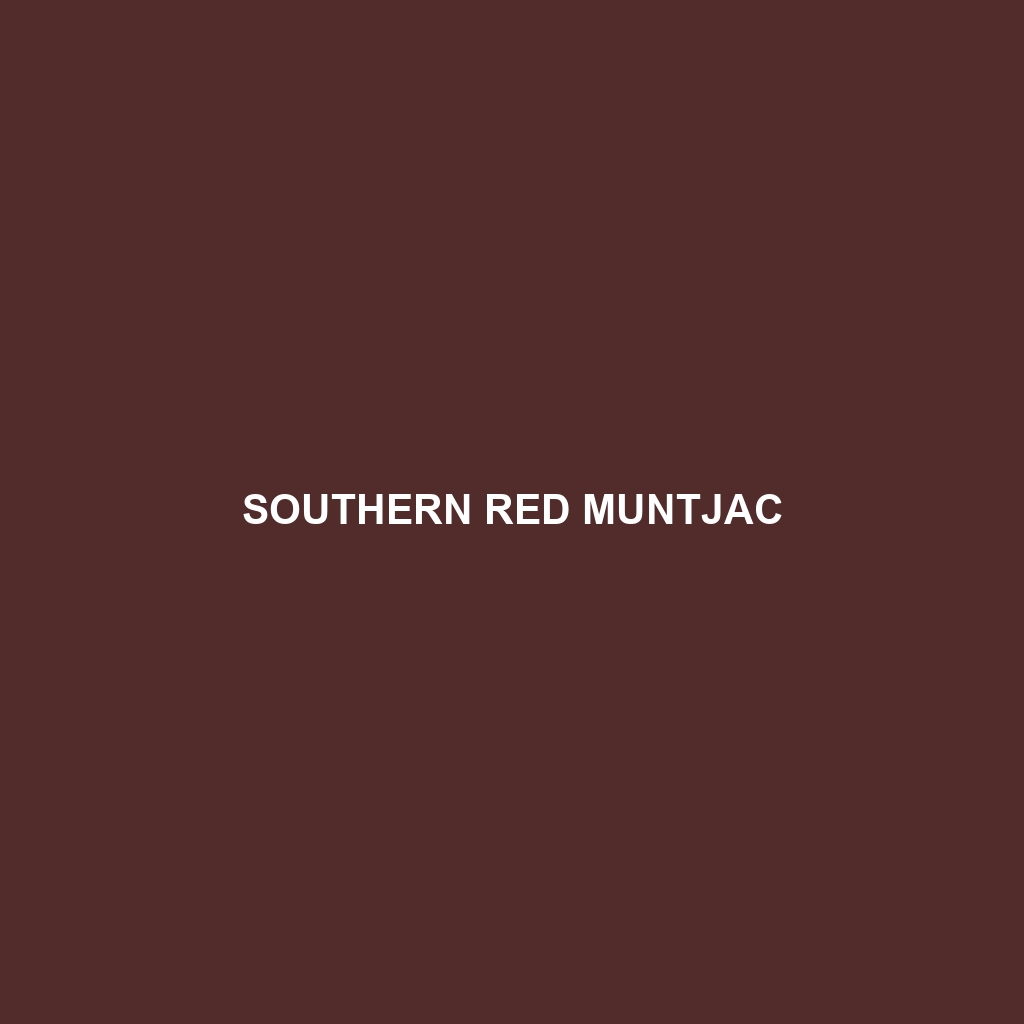Malabar Red Muntjac
Common Name: Malabar Red Muntjac
Scientific Name:
Habitat
The Malabar Red Muntjac is primarily found in the tropical forests of the Western Ghats, a mountain range in India that runs parallel to the western coast of the country. This species thrives in dense, moist evergreen forests and deciduous woodlands. Their habitat preference includes areas with rich undergrowth, which provides ample cover and food sources.
Physical Characteristics
Malabar Red Muntjacs are small-sized deer, typically measuring 75-110 cm in length and standing about 50-70 cm at the shoulder. They are characterized by their reddish-brown coats, which provide excellent camouflage in their forest habitat. Notable features include short, slender legs, a distinctive crest along their back, and, in males, prominent antlers that are usually shed and regrown annually. Their large, expressive eyes and large ears are also distinguishing attributes that enhance their acute senses.
Behavior
This species is primarily solitary or found in small groups, exhibiting a crepuscular activity pattern, with most activity occurring during dawn and dusk. Malabar Red Muntjacs are known for their vocalizations, especially mating calls and alarm sounds, which can be quite varied. During the day, they prefer to rest in dense foliage, making them less visible to predators.
Diet
Malabar Red Muntjacs are herbivores that primarily feed on a variety of leaves, fruits, and grasses. Their diet includes tender shoots, buds, and fruits that fall from trees, especially during the seasonal changes in their habitat. The ability to adapt their diet to available vegetation plays a crucial role in their survival.
Reproduction
Breeding typically occurs throughout the year, although some peaks may align with the monsoon season. Female Malabar Red Muntjacs give birth to a single fawn after a gestation period of approximately 7 months. Offspring are precocial, meaning they are able to stand and run shortly after birth. Maternal care is crucial in the early stages, and females will hide their young in dense foliage to protect them from predators.
Conservation Status
The Malabar Red Muntjac is currently classified as Vulnerable on the IUCN Red List. Habitat loss due to agricultural expansion, deforestation, and poaching threaten their populations. Conservation efforts are ongoing in their natural habitat to safeguard the species against further decline.
Interesting Facts
One fascinating fact about Malabar Red Muntjacs is that they are also known as “barking deer” due to their unique barking sound used for communication. Additionally, they can be distinguished from other muntjacs by their smaller size and vibrant coloration.
Role in Ecosystem
Malabar Red Muntjacs play a significant role in their ecosystem as herbivores, contributing to seed dispersal and vegetation dynamics. They serve as prey for larger carnivores in their habitat, making them an integral part of the food web. Their grazing habits help maintain the health of the forest understory, influencing other flora and fauna in their environment.
